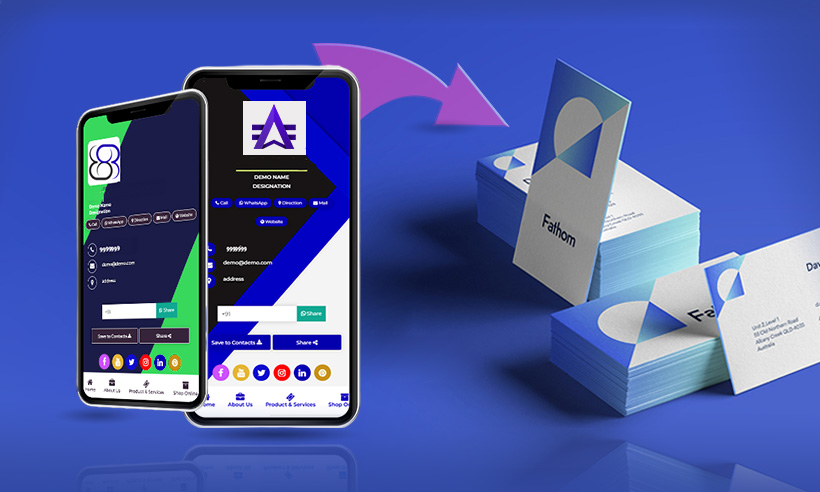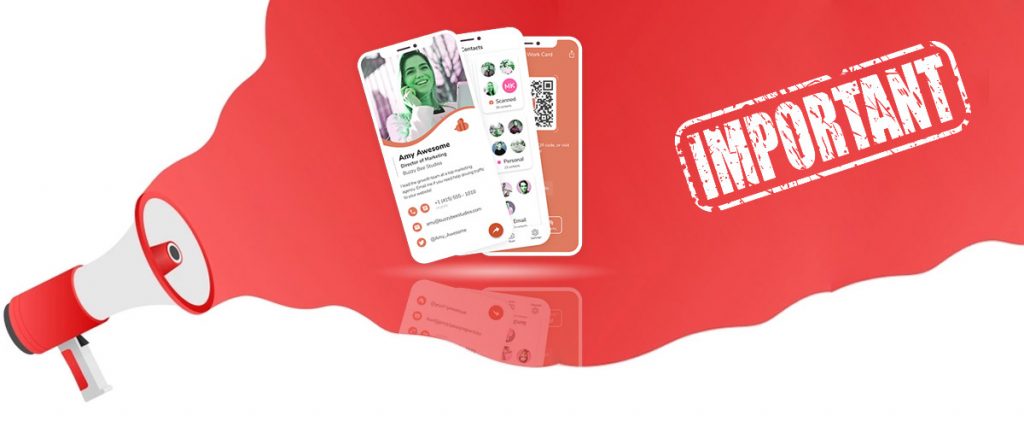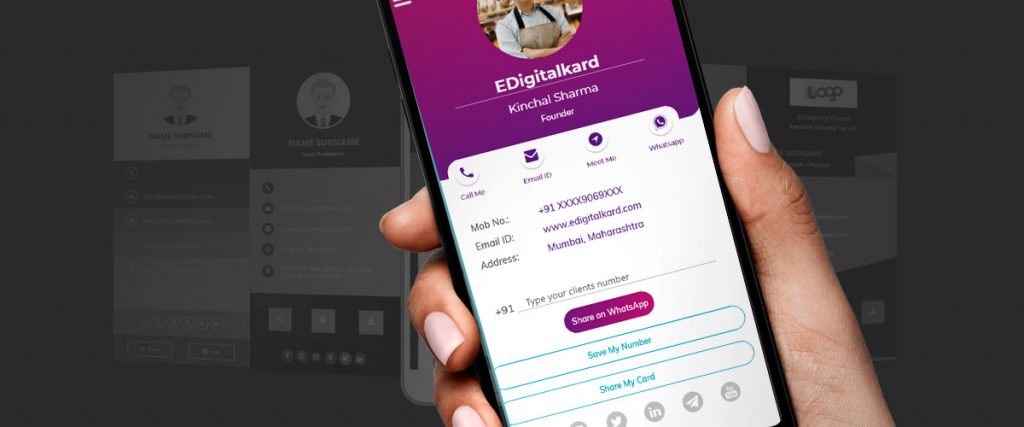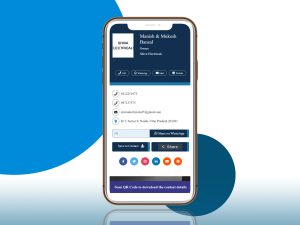Why Is Having A Business Card So Important?
Digital business cards are so important that are used by professionals to easily share information with new contacts. This is especially true for professionals whose firms rely on connections to grow and thrive.


One of the most essential marketing tools ever developed is the digital business card. But, why is having a business card so important? Seriously, that tiny piece of paper tells people a lot about you and the caliber of your services.
A properly designed digital business card is your first and lasting impression on a possible business partner, as well as a representation of you and a reflection of your brand.
Nowadays, business cards serve as both a professional networking tool and a promotional tool. But how did the business ecard achieve such prominence in the professional world?
What does the information on your business ecard say about you? And what are the greatest business card techniques for expanding your professional network?
Table of Contents
Why is Business Card so Important?


I’ve heard that handing out paper business cards is a fading, archaic habit. Nonetheless, 27 million business cards will be manufactured today, with a total of slightly under 10 billion issued this year. In this sense, business cards resemble their forefathers.
Digital business cards, on the other hand, are always developing to fit the demands of professionals, making them a vital resource for doing modern business. Business cards are being used for more than simply professional networking.
When a potential customer or investor requests your business card important, don’t give them a shabby one. To reflect the prior dialogue, a follow-up email might be created and strategized. If you don’t have any business cards, don’t apologize.
What Are Digital Business Cards?


It is not just any average business card; it is an amazing digital business card that can be shared from anywhere at any time. They are customized with your information and may be as detailed or as broad as you desire.
Give it a URL, a QR Code, or embed it on your website when you’re ready to share it. By clicking the link or scanning the QR Code, the receiver will be able to view all of your contact information.
Some free digital business card apps need the recipient to have the same app as you, while others allow you to share your contact information without having the recipient have the same app.
Build Your Reputation & Get Noticed Using Digital Business Cards


Digital business cards reflect your firm while instantly expressing the goal and values of your brand that is the important benefit of a business card. And every design decision, including material quality, color, and white space, conveys something about you and your organization.
Instead of depending just on personal preference, you should evaluate what each decision says about you.
Yes, your digital business card should be a tangible transaction of contact information, but the options are limitless.
When you consider that 88% of business cards are discarded. So sticking out — or, at the very least, giving your business ecard that extra edge so people don’t want to throw it away — has never been more necessary.
There are several ways to offer your card multiple functions, such as adding a list of industry advice on the back, having it transform into a paper aircraft or a little desk box, turning it into a name tag, or using any of these unique ideas.
This increases the likelihood that receivers will remember it and, more significantly, will be less inclined to discard it.
What Should You Put On Your Business Card?


Do you know what all information goes while making a digital business card? A smart business card important is more than simply a tool for providing information to prospects; it is also an opportunity to engage on a human level with a new prospect.
Here are strategies for transforming your digital business card from a throwaway piece of paper that people toss away to a strong connecting agent.
Logo & Tagline
Your digital business card is a visual representation of your brand. Include your company’s logo and catchphrase, as well as innovative use of shapes, colors, and phrases. The objective here is to guarantee that your brand is connected with (and remembered for) you in the future.
Name & Job Title
When it comes to business cards, many individuals get it wrong. Name and job title are essential, but so is your function in your company. Choose the one that best represents your principal function or job in the company.
Contact Details
You must inform folks how to contact you if you want them to do so. The important word here is “direct,” so don’t break the connection by routing callers through a phone menu. Personal email addresses and phone numbers should not be used on digital business cards. Stick to your work accounts and phone lines instead.
Links of Social Media Platforms
In the perspective of your consumers, you don’t exist if you’re not on social media. Don’t include all of your social media accounts on your business card important. Only include channels where prospects can get a taste of your work. If you have a personal Facebook profile, it is not required to be listed on your digital business card.
Skills
Prospects need to know what you can accomplish for them if you want a business relationship. Photography, medicine, and coding are some examples of specializations. Try writing your talent and expertise on a card in a few sentences.
Begin Using A Virtual Business Card Immediately!
In an age where so many networking opportunities take place online, having a simple way to exchange contact information is critical. A digital business card communicates that you are a thought leader in your field, regardless of industry.
Make a statement and take advantage of every opportunity to build your professional social network by creating and distributing your digital business card now.
Conclusion
Digital business cards are no longer only a means of providing clients with a company’s contact information. Furthermore, the cards have evolved into effective marketing tools for developing a company’s brand identity.
As a result, they should be one-of-a-kind yet basic designs that express your company’s message.









